|
The
|
|||||||||||||||||||||||||||||||||||||||||||||||||||||||
THE BURGENLAND BUNCH NEWS - No. 324 October 31, 2021, © 2021 by The Burgenland Bunch All rights reserved. Permission to copy excerpts granted if credit is provided. Editor: Thomas Steichen (email: tj.steichen@comcast.net) BB Home Page: the-burgenland-bunch.org BB Newsletter Archives: BB Newsletter BB Facebook Page: TheBurgenlandBunchOFFICIAL Our 25th year! The Burgenland Bunch Newsletter is issued monthly online. The BB was founded in 1997 by Gerald Berghold, who died in August 2008. |
|||||||||||||||||||||||||||||||||||||||||||||||||||||||
| Current Status Of The BB: * Members: 3084 * Surname Entries: 9011 * Query Board Entries: 5874 * Staff Members: 13 |
|||||||||||||||||||||||||||||||||||||||||||||||||||||||
This newsletter concerns: 1) THE PRESIDENT'S CORNER 2) A CORRESPONDENT WRITES ABOUT COVID 3) UPDATED LIST OF DIGITIZED CHURCH BOOKS (MATRIKEN) 4) HISTORICAL BB NEWSLETTER ARTICLES: - ENDONYMIC MINORITY NAMES IN BURGENLAND 5) ETHNIC EVENTS 6) BURGENLAND EMIGRANT OBITUARIES (courtesy of Bob Strauch) |
|||||||||||||||||||||||||||||||||||||||||||||||||||||||
1) THE PRESIDENT'S CORNER (by Tom Steichen)  Rather
than write something specific to Covid as a start to my comments this month, I'll let Article 2 speak for me on that
instead... and, since I need to apologize to our members who joined in September, this seems to be a good place to do that. Rather
than write something specific to Covid as a start to my comments this month, I'll let Article 2 speak for me on that
instead... and, since I need to apologize to our members who joined in September, this seems to be a good place to do that.As part of our Members pages, we have a page dedicated to the This month's random bits and pieces (Article 1) begins with a thank you message, then addresses the Illitchmann family one more time (I promise this is the last time!). That is followed by a double-dip into the village of Kukmirn—the first dip to talk about its growing of fruit and the distilling of schnapps from that fruit, and the second dip to tell you that we now have published a correct translation list of its old house numbers to modern street and orientation numbers. The next tidbit reports the inauguration of a new Superintendent—the equivalent of a Catholic diocese's bishop—for Burgenland's Evangelical Lutherans, and I follow that with a way-too-long bit on the salt lakes of the Seewinkel and the issues affecting them. From there, a bit discusses the election of the Hungarian opposition's joint candidate for prime minister and their attempt to finally unseat current Hungarian Prime Minister, Viktor Orbán, and his Fidesz party, who took power in 2010 with a super-majority that let them rewrite the Hungarian constitution and enact laws to keep their party in power. The next two bits talk about a new commuter ticket option for Burgenländers, and a short list of parishes that recently had digital church record images added to matriken.at. The final bit was a late addition prompted by a short note in the recent BG Newsletter... geographical historian Andrew F Burghardt died almost a year ago... so I'll tell you about that. Then we have our regular tidbit features: a monthly update on corona-virus happenings in Burgenland, the monthly BB Facebook report, book sales, a recipe and a cartoon-of-the-month. In Article 2, I present A Correspondent Writes About Covid. This is an article I debated publishing because it has nothing to do with genealogy or history. Rather, it discusses a reader's discomfort with something I wrote last month and, correspondingly, my discomfort with the misguided arguments used to justify my correspondent's take. My internal debate ended when I realized I truly believe I provide a public service to the BB community by discussing, as neutrally and accurately as I can, the Covid situation that exists in Burgenland, here in our ethnic enclaves and across the nation we share. Ultimately, I believe that, if accurate scientific facts makes someone uncomfortable, perhaps they should question their motivation rather than mine. Article 3 is an Updated List of the available Digitized Church Books available of the Eisenstadt Diocese's Matriken.at website. I also include a short tutorial in reading the codes that the website uses to identify their books. The remaining articles are our standard sections: A Historical BB Newsletter article, Ethnic Events and Emigrant Obituaries. A Very Happy Thank You: In the July 2020 Newsletter (# 311), I ran a plea for help from a BB Member, Sarah Kierein, who was searching for both a kidney donor and financial help for her sister, Molly, who was in end stage renal failure and in financial distress from her inability to work and her mounting medical bills. A few days back, I received another message from Sarah... a much happier message! As you can read below, sister Molly received a kidney in July of this year and appears to be on the way to recovery. Sarah wrote to yet again thank me for sharing her message and, further, to thank all of you who contributed financially and to send special thanks to the extraordinary soul who shared a kidney... although the donor was anonymous, it may have been one of you! Below is Sarah's message:
|
|||||||||||||||||||||||||||||||||||||||||||||||||||||||
2) A CORRESPONDENT WRITES ABOUT COVID I frequently receive messages from readers. This is not surprising in that I invite you to comment on the newsletter's content and, when possible, to add to the discussion for the benefit of all. Thus many messages are contributory to what is presented or are complimentary of what I write or choose to include in the BB Newsletter. Nonetheless, there are the occasional somewhat "negative" messages, such as the one this article is about. The message was politely written, which I appreciate, but, in two ways it was predicated on false information or assumptions. As you can see from my title above, the message involved Covid ...in particular, it was a response to the text I wrote about Covid in my opening comments last month before I presented the monthly "tidbits." My text discussed the then latest information about Covid infections and hospitalization rates in the US based on whether an adult was vaccinated or not. It also included information from the CDC about a notable increase in Covid infections among school-age children in Pennsylvania. While I thought I presented that information in a neutral way, there should be no doubt from this or my prior writings on Covid that I think the vaccine is beneficial and that all should want to be vaccinated. In fact, I wrote last month, "I'll be getting the booster as soon as possible... and I'll hope you do too!" Indeed, even as I wrote this text, I had a little ache in my shoulder from receiving a booster shot the day before. I believe it is the best way to keep me safe and also to put you at as little risk as possible, should I still get a breakthrough infection. So, with that as background, I'll repeat that I believe the message I received was based on errors. Those errors being: it presented false information as a basis for asking me to stop writing on the topic, and it made an incorrect assumption about my motivation for writing about it. Given this, I put together a reply to the correspondent that tried to correct both errors. However, I debated for two weeks on whether I would share that response with the full readership of the Newsletter... but I chose to do so. Why? Because I am concerned that others are using either misleading or totally incorrect data as a basis for deciding whether to be vaccinated or not, or whether to have their children vaccinated or not. As part of my response to my correspondent, I explained why I frequently include comments in the Newsletter about Covid in the US and in Burgenland. I will not repeat that explanation here (as you can read it below), but I will note that those reasons also apply to my decision to share my response. As I do not wish to "call out" anyone on their views about Covid, I have chosen to remove the correspondent's name and city. Below the next divider, I present the message I received. Below the second divider, I present my reply. Further down is a third divider, below which I'll make a few comments concerning additional analyses I made after sending my response. These additional comments and analyses in no way alter the interpretation of what I wrote in my initial response. Here goes... Hi Thomas, I enjoy the news about the Burgenland and associated areas of the USA. You have a great newsletter. Please do not ruin the enjoyment of this newsletter by preaching about the covid disease. The covid vaccine in my county of Santa Barbara has proven to cause more harm (per the VAERS database) than good (1 death, 42 hospitalizations per 102,000 children over 2 years) for our children under the age of 18. Why is it “scary” that 25% of new cases are from children. Children under the age of 18 make up about 25% of the population. You have a wonderful newsletter and website… please don’t ruin it with your political views with respect to the covid vaccines. Best, 'Correspondent', 'city', CA Hi 'Correspondent', My “political” views do not enter in when I write about Covid. I am a registered Republican, though much more so for economic reasons than anything else. In general, I am disgusted when people take a position on a scientific issue based on what some politician or political party says. Although I am now retired, I spent my working career as a statistician in a research and development environment, so I’m very inclined to approach a scientific question via a data-driven approach. Thus I appreciate you mentioning the VAERS data system. For kicks, I looked it up and saw that it allows individuals to generate reports, so I did one for Hospitalizations across the US related to Covid-19 vaccines (all combined) for their full availability. One of the things I immediately noted was that there was a major “disclaimer” that you were supposed to read and that you must claim to understand before being allowed to proceed. In large part, the critical part of the disclaimer said (quoted from the site):
The disclaimer also said:
So, in multiple ways, they warn you that the vaccine being investigated may not have any relationship to the
outcome being reported on.
Again, as you can see, they add yet another “disclaimer” directly with the report... and it is probably good that they
do. |
|||||||||||||||||||||||||||||||||||||||||||||||||||||||
3) UPDATED LIST OF DIGITIZED CHURCH BOOKS (MATRIKEN) The Eisenstadt Diocese is in the process of providings digital images, of the pages of their publicly-available church books, on their website at https://matriken.at. As of the end of September, the website holds images from books from 75 parishes in the diocese. Below is the complete list of the digitized books currently available. To help you understand the coded book names in this list. I will first provide a tutorial. Tutorial on the Book-Naming Conventions For tutorial purposes, I repeat here the book listing for the Mannersdorf parish: Mannersdorf an der Rabnitz St 1827-1890 St 1891-1925 St 1919 St Tr 1721-1758 Ta 1722-1758 Ta 1827-1869 Ta Tr St 1789-1826 Tr 1827-1924 Ta Tr St 1665-1721 Unterloisdorf Ta Tr St 1759-1788 When it comes to the actual directory names on the website (each book is in its own subdirectory), they are a slightly more complicated variation that uses the book names as their core and with spaces replaced with underscore characters. For example, here are subdirectory names for Deutsch Schützen: Deutsch_Schuetzen_St_III_1875-1924_DE_Deutsch_Schuetzen_03 Deutsch_Schuetzen_St_II_1861-1874_DE_Deutsch_Schuetzen_02 Deutsch_Schuetzen_St_I_1741-1860_DE_Deutsch_Schuetzen_01 Deutsch_Schuetzen_St_Rapulare_IV_1924-1952_DE_Deutsch_Schuetzen_04 Deutsch_Schuetzen_Ta_II_1827-1896_DE_Deutsch_Schuetzen_06 Deutsch_Schuetzen_Ta_I_1742-1827_DE_Deutsch_Schuetzen_05 Deutsch_Schuetzen_Tr_III_1888-1923_DE_Deutsch_Schuetzen_07 Deutsch_Schuetzen_Tr_Rapulare_IV_1924_DE_Deutsch_Schutzen_08 Deutsch_Schutzen_Tr_II_1775-1887_DE_Deutsch_Schutzen_07 The important naming bits are, in order: * Deutsch_Schuetzen = village name (usually the German name but the Hungarian version may be used) * St, Ta, Tr = Sterben (deaths), Taufen (baptisms) and Trauungen (marriages); that is, the type of record. * Rapulare = "writings created for the continuing use of the parish," in this case, an index of the vital events in the book; sometimes, word "Index" or the singlular letter "R" is used instead. * I, II, III, IV, etc. = sequential Roman numbers of the books of a single type in the village * ####-#### = date range for the entries in the book * DE = Diocese Eisenstadt * Deutsch_Schuetzen_## = Parish Name and Arabic number for the books in the parish (all types combined) Notes: 1) The reason Deutsch_Schuetzen appears twice in a subdirectory name is that some parishes kept separate books for the daughter villages within their parish; the first use of Deutsch_Schuetzen here reflects a (daughter) village name, the second use provides the parish name, with the parish name used in both locations when the records for the daughter villages are not in separate books. In the book list for Mannersdorf (shown just above), the last subcollection is labeled "Unterloisdorf Ta Tr St 1759-1788." Here, Unterloisdorf is a daughter village that has a separate book for the indicated time span. 2) In some collections you will see that the St, Ta, and Tr notations are combined, for example, as Ta_Tr_St or Ta Tr St, meaning the various types of vital events are interwoven in one book, in this case in triplicates by year. You may also see slight variations on these notations, for example, Tauf for Ta, Str for St, etc. Don't be surprised to find any combinations or variations of these codes, with or without Rapulare or Index added. 3) In other parishes you will also see some codes that do not appear in these examples. For example, Liber, Matr, Prot, Def, Bapt, etc. These apparently are abbreviations for Latin terms: Liber = book; Matr(icula) = matrices; Prot(ocollum) = protocol/register; Def(unctorum) = death; Bapt(isatorum) = baptism. In addition, there are some rare code words used. These words will be in either German or Latin and can usually be deciphered with the help of an online translation website. 4) The Roman numbers (I, II, III, IV, etc.) in the subdirectory names are not used for some parishes; if missing, you will need to determine book order by the date ranges. Given this nomenclature, we see for Deutsch Schützen that we have: - death books for time periods: 1741-1860 (I), 1861-1874 (II), 1875-1924 (III), and 1924-1952 (IV), with book IV also containing an index. - baptism books for time periods: 1742-1827 (I) and 1827-1896 (II), with no index. - marriage books for time periods: 1775-1887 (II), 1888-1923 (III) and 1924 (IV), with book IV also containing an index. The implication from the marriage book names is that there likely was a Book I for time period ~1741-1774, as the listed books are labeled starting with II. Whether this book is missing because it was lost or destroyed, has not yet been digitized, or has not yet been added to the website, is unknown. I suspect that the differing years where records end is due to the Austrian privacy laws, as the ordering of end-years, 1896 for baptisms, 1925 for marriages, and 1952 for deaths, correspond (approximately) to the legal limits for unrestricted access: currently, older than 1921, 1946 and 1991, respectively (that is, older than 100 years for baptismal books, 75 years for marriage books, and 30 years for death books). That the actual end-years do not closely approach these legal limits suggests that the last book in each sequence contains some recent records that are legally blocked, therefore, the complete book is blocked. You may note that there are two books with Arabic number 07 for Deutsch Schützen. I suspect this is an error and one book should be labeled 09. Likewise, the "Deutsch_Schutzen" spelling in the last sub-collection name is likely a typographical error. Available Digitized Books
Apetlon
St 1790-1826 St 1873-1923 Ta-St 1827-1851 Ta Tr St 1728-1745 Ta Tr St 1746-1789 Ta Tr St 1852-1872 Ta 1790-1826 Ta 1869-1894 Ta 1913-1923 Tr 1790-1826 Tr 1827-1851 Tr 1868-1923 Bad Sauerbrunn St 1940-1950 Tr 1940-1960 Tr R 1940-1954 Baumgarten Ta Tr St 1709-1753 Ta Tr St 1753-1788 Ta Tr St 1789-1834 Ta Tr St 1835-1851 Ta 1675-1720 Bernstein Ta Tr St 1733-1754 Ta Tr St 1754-1799 Bildein Ta Tr St 1773-1846 Bocksdorf Ta Tr Index 1787-1896 St 1899-1923 St 1924-1934 Ta 1756-1787 Acta parochialia 1808-1841 Ta-St 1846-1884 Ta Tr St 1787-1846 Ta 1891-1915 Ta St 1870-1896 Tr St 1738-1787 Tr 1846-1890 Tr 1891-1925 Breitenbrunn St 1826-1887 St 1888-1923 Ta Tr St 1663-1691 Ta Tr St 1689-1720 Ta Tr St 1689-1771 Ta 1761-1834 Ta 1835-1898 Ta 1899-1924 Tr St 1772-1834 Tr 1835-1911 Tr 1912-1923 Deutsch Jahrndorf Ta Tr St 1703-1745 Ta Tr St 1746-1826 Deutsch Kaltenbrunn St 1828-1868 St 1869-1898 St 1899-1924 Ta 1785-1856 Ta 1856-1886 Ta 1887-1908 Ta Verschiedene Diversa 1785-1856 Tr 1828-1872 Tr 1873-1923 Tr-St 1737-1766 Tr-St 1766-1827 Deutschkreutz St 1735-1758 St 1758-1844 St 1847-1877 St 1878-1908 St 1909-1916 St 1916-1936 St 1937-1971 Ta 1886 1895 Ta Tr 1683-1704 Ta Tr 1704-1724 Ta Tr 1725-1758 Ta 1758-1826 Ta 1825 1854 Ta 1854 1868 Ta 1869-1885 Tr 1758-1851 Tr 1852-1903 Kuelloe Girm Tauf 1759-1826 Kuelloe Girm Tr 1773-1824 Deutsch Schützen St 1875-1924 St 1861-1874 St 1741-1860 St Rapulare 1924-1952 Ta 1827-1896 Ta 1742-1827 Tr 1888-1923 Tr 1775-1887 Tr Rapulare 1924 Deutsch Tschantschendorf St 1788-1877 Ta 1788-1860 Ta 1861-1893 Tr 1788-1915 Ta 1894-1915 Donnerskirchen Index zur verlorenen Rapulare St 1788-1826 St-Tr-Ta Index 1676-1756 Ta Indices 1788-1826 Ta Tr 1615-1676 Ta Tr St 1689-1711 Ta Tr St 1713-1788 Tr 1788-1826 Tr Index 1712-1788 Drassburg Ta Tr St 1753-1788 Ta Tr St 1789-1834 Drassmarkt Ta Tr St 1751-1804 Ta Tr St 1722-1751 Ta 1696-1721 Dürnbach St 1745-1862 Ta 1713-1757 Ta 1756, 1758-1840 Ta 1840-1852 Edelstal St 1826-1868 St 1785-1826 St 1868-1893 St 1774-1784 St 1924-1962 St 1894-1923 Ta 1785-1827 Ta 1826-1867 Ta 1868-1893 Ta 1774-1784 Ta 1894-1923 Tr 1924-1950 Tr 1785-1827 Tr 1774-1784 Tr Rapulare 1950-1954 Tr Rapulare 1827-1905 Tr Rapulare 1905-1950 Tr Rapulare 1951-1985 Eisenstadt Dompfarre zum hl. Martin Ta Tr St 1624-1664 Ta Tr 1665-1680 Ta Tr St 1681-1730 Ta Tr St 1729-1788 Ta 1865-1905 Ta 1871-1888 Ta 1818-1864 Ta 1788-1818 Tr 1871-1924 Tr 1856-1870 Tr 1788-1855 St 1788-1843 St 1843-1870 St 1871-1917 Eisenstadt Oberberg Ta Bevoelk Konskription 1788-1817 Ta Index Rapulare 1788-1817 St 1895-1912 St 1912-1953 St 1788-1816 St 1713-1788 St Rapulare 1817-1867 St Rapulare 1918-1929 St Rapulare 1868-1917 Ta 1788-1817 Ta Rapulare 1912-1919 Ta Rapulare 1713-1788 Ta Rapulare 1817-1862 Ta Rapulare 1863-1911 Ta Tr St 1684-1713 Tr 1916-1926 Tr Rapulare 1880-1923 Tr Rapulare 1788-1843 Tr Rapulare 1713-1788 Tr Rapulare 1844-1880 Forchtenau Index Ta Tr St Ta St 1740-1751 Ta Tr St 1660-1684 Ta Tr St 1705-1774 Ta Tr St 1728-1756 Ta Tr St 1760-1774 Ta Tr St 1774-1789 Ta Tr St 1789-1802 Ta 1685-1704 Frankenau Index St 1789-1827 Index St 1827-1882 Index Ta 1682-1749 Index Ta 1750-1800 Index Ta 1800-1827 Index Ta 1827-1852 Index Ta 1852-1882 Index Tr 1682-1789 Index Tr 1789-1826 Index Tr 1827-1852 Index Tr 1852-1882 St 1789-1826 Ta Tr St r 1682-1786 Ta Tr St r 1827-1852 Ta Tr St r 1852-1881 Ta Tr 1786-1826 Frauenkirchen St R 1853-1871 St R 1836-1852 St R 1790-1835 St R 1885-1915 St R 1872-1884 St 1685-1789 Ta R 1853-1871 Ta R 1830-1852 Ta R 1790-1829 Ta R 1717-1789 Ta R 1697-1717 Ta R 1885-1922 Ta R 1872-1884 Tr R 1853-1871 Tr R 1836-1852 Tr R 1790-1835 Tr R 1729-1789 Tr R 1885-1897 Tr R 1872-1884 Gaas Liber-Conversorum 1702-1746 St 1708-1746 Ta Tr St 1747-1830 Ta Tr St 1819-1852 Ta Tr St r 1737-1746 Ta 1702-1722 Ta 1723-1736 Tr 1702-1746 Gattendorf St 1827-1869 St 1869-1923 St 1924-1954 Ta 1790-1826 Ta 1827-1863 Ta 1863-1900 Ta 1901-1937 Ta Tr St r 1682-1762 Tr-St 1790-1826 Tr 1827-1923 Tr 1924-1950 Tr Ta St 1763-1789 Tr 1938-1954 Protokollbuch 1937-1950 Protokollbuch 1951-1986 Geresdorf St 1740-1776 St 1777-1784 Ta 1740-1757 Ta 1756-1784 Ta 1759-1784 Tr 1740-1784 Grosshöflein St 1733-1750 St 1830-1881 St 1882-1957 Ta 1658-1750 Ta 1788-1818 Ta 1843-1900 Tr 1733-1750 Tr 1788-1842 Tr 1843-1923 Tr 1938-1954 Tr-Ta-St 1788-1829 Tr-Ta-St 1818-1842 Ta Tr St Conf 1751-1788 Ta Tr St 1658-1750 Index zum Band III Ta Tr Index 1751-1788 Tr Index 1658-1750 Grosspetersdorf Conscr animarum Ta 1728-1775 Index Ta Tr St 1709-1817 St 1710-1716 Ta 1709-1727 Ta 1727-1736 Ta 1776-1817 Tr 1711-1721 Tr-St 1728-1796
Grosswarasdorf
St 1817-1832 St 1833-1906 St 1906-1932 St Index 1833-1906 Ta 1692-1711 Ta 1838-1867 Ta 1867-1896 Ta 1896-1928 Ta Tr 1817-1838 Ta Tr St -1665-1690 Ta Tr St -1711-1733 Ta Tr St -1751-1788 Ta Tr St -1789-1816 Tr 1832-1905 Tr Index 1751-1788 Güssing Ta-1666-1682 Ta 1686-1717 Tr 1690-1746 Halbturn St 1786-1826 Ta 1786-1826 Ta Tr St 1724-1789 Tr 1789-1825 Hannersdorf St 1818-1876 Ta 1818-1854 Ta 1854-1902 Ta-St 1721-1771 Ta-St 1771-1818 Tr 1792-1897 Heiligenkreuz St 1792-1835 St 1852-1857 St 1857-1873 St 1874-1887 St 1901-1920 St 1924-1939 St 1940-1972 Ta-St 1733-1768 Ta 1717-1730 Ta 1731-1760 Ta 1780-1832 Ta 1834-1852 Ta 1852-1856 Ta 1856-1874 Ta 1875-1896 Ta Tr St 1710-1727 Ta Tr St 1761-1791 Tr 1792-1832 Tr 1833-1836 Tr 1837-1852 Tr 1852-1866 Tr 1867-1901 Tr 1902-1923 Horitschon St 1789-1866 St 1867-1905 Ta Tr St 1710-1732 Ta Tr St 1731-1747 Ta Tr St 1748-1788 Ta Tr 1696-1709 Ta 1789-1816 Ta 1816-1905 Tr 1789-1901 Hornstein Firm 1917-1956 St 1843-1852 St 1853-1876 St 1876-1910 Ta 1684-1776 Ta 1777-1805 Ta 1806-1842 Ta 1843-1852 Ta 1853-1869 Tr-St 1807-1843 Tr 1843-1852 Tr 1853-1863 Tr Str 1701-1776 Tr St 1777-1806 Ilmitz St-Tr 1701-1748 St-Tr-Ta 1749-1809 Tr-St-Ta 1809-1851 Jennersdorf Grieselstein Ta St Tr 1777-1828 Henndorf Ta St Tr 1777-1828 Ta-St-Tr 1685-1701 Ta-St-Tr 1692-1713 Ta-St-Tr 1713-1737 Ta-St-Tr 1734-1747 Ta-St-Tr 1748-1777 Ta-St-Tr 1777-1820 Ta-St-Tr 1820-1858 Ta-St-Tr 1849-1870 Rax-Ta-St-Tr 1788-1828 Jois St 1659-1699 St 1700-1740 St 1740-1785 St 1785-1828 Ta 1659-1699 Ta 1700-1740 Ta 1740-1785 Ta 1785-1828 Ta Index 1785-1828 Tr 1659-1699 Tr 1700-1740 Tr 1740-1785 Tr 1785-1827 Kaisersdorf St 1853-1881 St 1881-1936 St 1937-1953 St-Ta 1854-1863 Ta 1854-1881 Ta 1882-1931 Tr Rapulare 1929-1954 Tr 1857-1926 Tr 1927-1952 Tr St Ta 1724-1789 Tr St Ta 1783-1856 Weingraben Tr St Ta 1786-1853 Kaisersteinbruch St 1827-1919 St 1920-1939-1995 Ta 1870-1939 Tr 1887-1923 Tr 1951-1953 Kirchfidisch St 1797-1846 St 1847-1923 Ta 1797-1846 Ta 1797-1864 Ta 1847-1886 Tr 1865-1923 Kittsee St 1730-1789 St 1790-1813 St-Tr 1702-1730 St-Tr-Ta 1692-1698 St-Tr-Ta 1813-1826 Ta 1698-1730 Ta 1730-1755 Ta 1755-1789 Ta 1790-1813 Tr 1730-1789 Kitzladen St 1757-1852 St 1852-1876 Ta 1757-1852 Ta 1852-1867 Tr 1757-1852 Tr 1852-1895 Tr 1862 Tr-St-Ta 1750-1757 Hirtenbrief 1749-1761 Hirtenbrief 1761-1777 Hirtenbrief 1777-1778 Hirtenbrief 1778-1784 Kleinfrauenhaid St 1782-1826 St 1827-1864 St 1865-1875 St 1875-1939 St Index A 1730-1781 St Index B 1730-1781 St Index C 1730-1939 Ta 1730-1781 Index B Ta 1782-1815 Ta 1827-1852 Ta 1852-1864 Ta 1865-1888 Ta 1888-1904 Ta Index A 1730-1781 Ta Tr St 1661-1729 Ta Tr St 1730-1781 Tr 1730-1781 Index Tr 1730-1939 Index A Tr 1825-1886 Tr 1827-1852 Tr 1886-1939 Kleinhöflein St Rapulare 1788-1814 St Rapulare 1774-1788 St Rapulare 1814-1829 St Rapulare 1710-1773 St Rapulare 1885-1938 St Rapulare 1853-1885 St Rapulare 1829-1852 Ta R 1814-1829 Ta Rapulare 1788-1814 Ta Rapulare 1774-1788 Ta Rapulare 1710-1773 Ta Rapulare 1875-1938 Ta Rapulare 1853-1875 Ta Rapulare 1829-1852 Tr Fragm 1907-1930 Tr Rapulare 1788-1814 Tr Rapulare 1774-1788 Tr Rapulare 1814-1829 Tr Rapulare 1710-1773 Tr Rapulare 1894-1938 Tr Rapulare 1854-1893 Tr Rapulare 1830-1852 Klingenbach Ta Tr St 1682-1773 Ta Tr St 1810-1891 Ta 1724-1788 Ta Tr St Index 1682-1788 Kobersdorf St 1808-1830 St 1831-1925 St-Ta Tr 1754-1807 Ta 1808-1830 Ta 1831-1892 Tr 1808-1830 Tr 1831-1941 Tr 1942-1966 Königsdorf St 1719-1754 St 1831-1881 St 1882-1918 St 1755-1831 Ta 1719-1755 Ta 1740-1816 Ta 1861-1897 Ta 1897-1919 Ta 1817-1860 Tr 1719-1754 Tr_1719-1754 Tr 1912-1924 Tr 1864-1911 Tr 1755-1860 Kroatisch Geresdorf Firm 1785-1860 St 1785-1809 St 1809-1846 St 1846-1860 St Index 1903-1938 St Index 1903-1913 St-Ta Tr Index 1785-1816-1860 St 1861-1902 6 St Index 1861-1902 Ta 1785-1798 Ta 1799-1824 Ta 1825-1844 Ta 1844-1857 Ta 1858-1860 Ta 1861-1883 Ta 1884-1900 Ta Index 1858-1860 Ta Index 1861-1902 Tr 1786-1860 Tr 1903-1945 Tr Index 1903-1938 Tr Index 1903-1946 Krensdorf St 1887-1986 St 1852-1886 St 1827-1852 St 1788-1827 Ta 1768-1787 Ta 1887-1965 Ta 1852-1886 Ta 1827-1852 Ta 1788-1827 Tr 1924-1961 Tr 1852-1923 Tr 1827-1852 Tr 1788-1827 Kroatisch Minihof St 1871-1923 Ta 1871-1923 Tr 1871-1923 Tr-Ta-St 1789-1856 Firm 1918-1991 Tr 1871-1923 Tr Ta St 1789-1856 Firm 1918-1991 Firm 1918-1926 Kukmirn Ta 1777-1781 Ta 1782-1790 Ta 1791-1803 Ta 1804-1823 Landsee 1895
Lockenhaus
St 1767-1820 St 1821-1857 St 1858-1874 St 1875-1889 St 1889-1911 Ta 1780-1843 Ta 1844-1880 Ta 1881-1906 Ta Tr 1667-1704 Ta Tr 1704-1729 Tr 1780-1848 Tr 1849-1880 Tr 1881-1902 Tr 1903-1923 Tr 1924-1935 Tr Ta 1730-1780 Tr Ta 1780-1923 Lutzmannsburg Strebersdorf Ta Index A-O 1826-1895 Ta 1652-1674 Ta 1716-1743 Ta 1744-1775 Ta 1776-1824 Ta 1826-1869 Strebersdorf Ta Index P-Z 1826-1895 Ta Tr Str 1716-1748 Ta Tr Str 1800-1826 Ta Tr Str 1824-1826 Tr 1827-1869 Tr Str 1683-1711 Tr Str 1716-1746 Tr Str 1747-1803 Tr Str Ta 1870-1920 Strebersdorf Ta Tr Str 1749-1799 Mannersdorf an der Rabnitz St 1827-1890 St 1891-1925 St 1919 St Tr 1721-1758 Ta 1722-1758 Ta 1827-1869 DE Ta Tr St 1789-1826 Tr 1827-1924 Ta Tr St 1665-1721 Unterloisdorf Ta Tr St 1759-1788 Markt Neuhodis St 1939-1981 Tr Rapulare 1939-1945 Markt St. Martin Tr 1853-1925 St 1853-1899 Ta 1660, 1664, 1676, 1690, 1668, 1669-1709 Ta_Tr_St_1709-1769 Ta Tr St 1770-1826 Ta 1889-1911 Ta 1853-1888 Ta Tr St 1827-1842 Ta Tr St 1843-1853 Ta Tr St 1853-1899 Ta 1889-1911 Mattersburg Ta Tr St 1660-1701 Ta Tr St 1701-1788 Mitterpullendorf Consig mix Matrimo 1858 1860 1876 1904 St 1829-1871 St Tr 1692-1779 St 1758-1829 Ta 1730-1757 Ta 1758-1828 Ta 1829-1871 Ta Tr 1691-1729 Ta 1872-1912 Tr 1829-1871 Tr 1779-1827 Moschendorf St 1788-1892 Ta 1788-1892 Ta Index 1788-1892 Tr 1789-1923 Tr Index 1789-1923 Neckenmarkt St 1663 St 1717-1722 St 1744-1763 St 1723-1743 Ta 1683-1699 Ta 1650-1667 Ta 1668-1682 Ta 1700-1724 Ta 1725-1751 Ta 1752-1781 Tr 1660 Tr 1668-1682 Tr 1683-1698 Tr 1700-1720 Tr 1723-1787 Neudoerfl St 1700-1745 St 1789-1826 St Rapulare 1745-1788 St Rapulare 1827-1852 St Rapulare 1928-1955 St Rapulare 1873-1901 St Rapulare 1852-1872 Neudörfl St 1700-1745 St Rapulare 1789-1826 St Rapulare 1745-1788 St Rapulare 1827-1852 St Rapulare 1928-1955 St Rapulare 1873-1901 St Rapulare 1852-1872 Ta Rapulare 1700-1788 Ta Rapulare 1789-1826 Ta Rapulare 1745-1788 Ta Rapulare 1827-1852 Ta Rapulare 1700-1745 Ta Rapulare 1909-1930 Ta Rapulare 1897-1909 Ta Rapulare 1870-1897 Ta Rapulare 1852-1870 Tr 1745-1788 Tr Rapulare 1890-1940 Tr Rapulare 1789-1826 Tr Rapulare 1827-1852 Tr Rapulare 1700-1745 Tr Rapulare 1852-1889 Neuhaus am Klausenbach St 1732-1816 Ta 1732-1769 Ta Tr St 1690-1732 Tr 1732-1836 Neusiedl am See Index 1700-1751 Ta 1774-1789 Index St 1800-1827 St 1827-1851 St 1852-1869 Ta Tr St 1674-1700 Ta Tr St 1613-1649 Ta Tr St 1650-1674 Ta Tr St 1751-1800 Ta 1800-1826 Ta 1827-1857 Ta 1852-1870 Ta Tr 1700-1751 Tr 1800-1826 Tr 1827-1851 Tr 1852-1889 Nikitsch Firm 1912-1962 St 1789-1856 St 1856-1899 St 1900-1920 St 1921-1950 Ta 1856-1887 Ta 1789-1856 Ta 1888-1898 Ta Tr St 1750-1788 Ta Tr St 1712-1746 Ta 1889-1923 Tr 1789-1856 Tr 1857-1923 Tr 1924-1938 Oggau Ta Tr St 1634-1665 Ta Tr St 1704-1735 Ta Index 1736-1807 Ta Tr St 1704-1735 Parndorf Ta Tr St 1685-1719 Ta Tr St 1720-1761 Pinkafeld Consig-Mat-mix 1840 St 1754-1852 St 1837-1851 St 1852-1859 St 1860-1887 St 1888-1910 Ta 1663-1680 Ta 1684-1687 Ta 1712-1743 Ta 1754-1776 Ta Tr St 1712-1754 Ta 1691-1710 Ta 1742-1748 Ta 1777-1852 Ta 1837-1851 Ta 1852-1858 Ta 1858-1884 Ta 1884-1905 Tr 1752-1852 Tr 1837-1851 Tr 1852-1873 Tr 1874-1882 Pötsching Index Tr 1669-1779 Tr Rapulare 1885-1932 St 1670-1779 St 1815-1827 St 1903-1932 St 1872-1904 St 1852-1872 St 1788-1815 St 1827-1852 Ta 1669-1779 Ta 1788-1806 Ta 1907-1933 Ta IV 1806-1827 Ta Tr St 1780-1788 Ta 1881-1906 Ta 1852-1872 Ta 1827-1851 Tr 1670-1779 Tr 1788-1827 Tr 1827-1852 Tr 1669-1779 Tr 1852-1884 St. Kathrein St Rapulare 1952-1967 St 1860-1915 St 1916-1951 St 1804-1859 Sankt Martin in der Wart St 1886-1924 Ta 1871-1924 Ta 1803-1871 Tr 1814-1904 Tr 1905-1924 Verlobte 1938 Tadten Ta Tr St 1755-1789 Ta Tr St 1726-1754 Trausdorf St Rapulare 1875-1912 St 1698-1788 St Rapulare 1839-1875 St Rapulare 1788-1838 Ta 1698-1788 Ta Rapulare Tr St 1788-1838 Ta Rapulare 1866-1899 Ta Rapulare 1839-1865 Tr 1698-1788 Tr Rapulare 1788-1838 Tr Rapulare 1839-1912 Unterfauenhaid Ta 1725-1804 St 1725-1795 St Rapulare 1796-1849 St Rapulare 1850-1911 Ta Index 1725-1804 Ta Rapulare 1805-1849 Ta Rapulare 1850-1889 Tr 1725-1847 Tr Index 1725-1847 Tr Rapulare 1848-1886 Walbersdorf St 1710-1774 St 1710-1774 St 1774-1788 Ta 1703-1749 Ta 1750-1788 Tr 1744-1774 Tr 1774-1788
|
|||||||||||||||||||||||||||||||||||||||||||||||||||||||
4) HISTORICAL BB NEWSLETTER ARTICLES Editor: This is part of our series designed to recycle interesting articles from the BB Newsletters of past years. The entry below, from 10 year ago, links to a document that might be useful for you on occasion. Not surprisingly, the link was broken after the passage of ten years, however, I was able to find it again and provide the modern link below (I also updated the link in the old article!). Enjoy... THE BURGENLAND BUNCH NEWS No. 214 October 31, 2011 ENDONYMIC MINORITY NAMES IN BURGENLAND 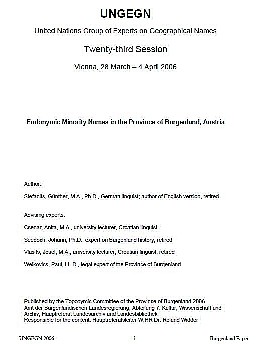 I
recently discovered a publication, titled "Endonymic Minority Names in the Province of Burgenland, Austria," whose
English version was written by Günther Stefanits, PhD, German linguist retired, and published by the Toponymic Committee
of the Province of Burgenland in 2006. It was included as a paper at the UNGEGN (United Nations Group of Experts on
Geographical Names) Twenty-third Session, held in Vienna, 28 March – 4 April, 2006. A pdf of the full paper can be found by
clicking the cover page thumbnail image to the right. I
recently discovered a publication, titled "Endonymic Minority Names in the Province of Burgenland, Austria," whose
English version was written by Günther Stefanits, PhD, German linguist retired, and published by the Toponymic Committee
of the Province of Burgenland in 2006. It was included as a paper at the UNGEGN (United Nations Group of Experts on
Geographical Names) Twenty-third Session, held in Vienna, 28 March – 4 April, 2006. A pdf of the full paper can be found by
clicking the cover page thumbnail image to the right.Despite the paper's obscure title, it contains information that is both interesting, and possibly useful, to those of us doing Burgenland research. First off, it might be helpful to know that UNGEGN defines endonym as "the name of a geographical feature in an official or well-established language occurring in that area where the feature is located." In contrast, they define exonym as the "name used in a specific language for a geographical feature situated outside the area where that language is spoken, and differing in its form from the name used in an official or well-established language of that area where the geographical feature is located." Said more simply, what they are talking about is the name by which the locals call something (endonym) versus what the foreigners call it (exonym). An obvious example for us is that Austria is the English exonym corresponding to the German endonym Österreich. Exonyms and endonyms can refer to the name of a place (toponym), ethnic group (ethnonym), or language (glossonym). Since it is the Toponymic Committee of Burgenland that published this work, it is place names that are of interest in the paper, in particular, field names, street names, and village section names in Burgenland. The paper's (and the Committee's) primary goal is to define the "official" names (plural intended) for such places. As you will see if you read further, the paper establishes the historical reasons for having multiple names for the same place, recites the laws requiring when multiple names are required, and then goes about defining the official spellings and preferred order of use. But the paper also has an extensive section in the Introduction (5+ pages long) that includes basic information about Burgenland ("...total area of 1,531 square miles, 29% forest and 5% vineyards, extending 99 miles from north to south, 2.5 to 37 miles from east to west. ...the climate is mostly Pannonian with an annual average temperature of 50 degrees Fahrenheit and annual precipitation of 26 inches. ...277,600 inhabitants, with age structure 17% under 15 years, 61% from 15 to 60 years, and 22% over 60 years of age. ...colloquial languages are 90% German, 7% Croatian and 2% Hungarian. ...religious affiliation is 82% Roman-Catholics and 14% Protestants", etc.). The Introduction also includes an excellent historical section beginning in prehistoric times ("...the oldest tool finds in the region are approximately 10,000 years old ...in the Bronze Age, ore was already being mined at the Güns Mountains," etc.) and extending into 2005. These parts of the Introduction alone makes the paper worth reading. The next sections of the Introduction fully describes the ethnic/language groups ("...about 85% of its 277,570 inhabitants only speak German, approximately 25,000 people speak and understand Croatian, 16,500 speak Hungarian, and about 4,000 speak Romanes; approximately 15% of the population are bi- or multilingual") and the religious/language groups ("...the great majority of German-speaking believers, practically all Croats and Roma, are Roman Catholic, the Lutheran Protestants are all German speaking, the Reformed Protestants are all Hungarian speaking. All municipalities with a Hungarian majority or a strong Hungarian minority are Reformed Protestants with the exception of Siget in der Warth..."). The Introduction then discusses the legislation that defines minorities and when and where multi-language names are required. These laws compel that "names and inscriptions of topographical nature attached by regional authorities or by other corporations and institutions of public right..." must be provided in specific languages that vary from village to village depending on the minority makeup of that village. (These same laws require that official government business must be transactable in the specified languages also.) Only now does the paper get to its "Exposition" section, wherein it gives some official names and the logic by which those names were defined. This section is much like the BB's Village pages, wherein we give the village names in German, Hungarian and Croatian (when appropriate). The logic section is also similar to the many discussions that have appeared in the BB newsletter about the meaning and/or origins of a surname. Interestingly, the author notes that "...among the Croatian place names we find new Croatian names, translations from either German or Hungarian and lingual distortions from either German or Hungarian as well." The author even indicates some Croatian names being adopted from the German but "heavily distorted." This section does provide Roma (Romanes) names for 42 villages (something the BB Village pages do not supply but perhaps now will). The author notes that "Roma place names have not been thoroughly researched into yet" so only those fully researched are provided. The Exposition then addresses regional, street and field names. It states that "A special field of area names is the range of agriculture: soil in the shape of farmland, fields and meadows has accumulated so many expressions not only in German, but also in Croatian and Hungarian, that these field names have become a treasure of old and traditional names in all the languages found in the Burgenland." It is my opinion that this section may prove useful in understanding some obscure words found in old records. The Exposition closes with comments on "New Challenges" in establishing place names, especially those brought in with the influx of Turkish workers in the last 15 years. These workers (and their families) have not yet integrated into Burgenland society but constitute up to 25% of some village populations. They will eventually create new names for Burgenland places that will need to be incorporated into the official nomenclature. The body of the paper is some 28 pages long but is an easy, fairly quick read. In addition, the paper has a 40 page Appendix that contains both many interesting tables supporting and supplementing the facts given in the Introduction and the lists of official names defined by the Committee. Finally, there is a 5 page Annex that lists Ethnic Non-Government Organizations that have influence in the development of the multi-ethnic "language" of Burgenland. While this may seem to be an obscure paper, I found it to be quite interesting; you may too. Ed Note: I asked Klaus Gerger, a Burgenland resident, about his experience with minority signage in Burgenland. He reports that "in practice the implementation of the law worked out smoothly in Burgenland. We have bilingual Ortstafeln (city limit signs) as stated in the article. Some names, e.g., of the fire station or kindergarten, are also bilingual but that's it basically. To my knowledge, it has no impact on companies. In other provinces, especially Carinthia, it is a matter of constant argument and the signs are not implemented yet." |
|||||||||||||||||||||||||||||||||||||||||||||||||||||||
5) ETHNIC EVENTS LEHIGH VALLEY, PA Wednesday-Sunday, Sep.29-Oct.3: Oktoberfest at the Reading Liederkranz. Info: readingliederkranz.com Friday, Nov. 5: The Alpenländers at the Lancaster Liederkranz. Info: www.lancasterliederkranz.com Sunday, Nov. 7: Dave Betz Band at the Coplay Sängerbund. Info: www.coplaysaengerbund.com Friday, Nov. 12: Joe Kroboth Duo at the Reading Liederkranz. Info: www.readingliederkranz.com Sunday, Nov. 14: Josef Kroboth Orchestra at the Coplay Sängerbund. Info: www.coplaysaengerbund.com Saturday, Nov. 20: Stiftungsfest of the Alpenrose Schuhplattlers at the Lancaster Liederkranz. Info: www.lancasterliederkranz.com Sunday, Nov. 21: Emil Schanta Band at the Coplay Sängerbund. Info: www.coplaysaengerbund.com Friday, Nov. 26: Kermit Ohlinger at the Reading Liederkranz. Info: www.readingliederkranz.com Sunday, Nov. 28: Maria & John at the Coplay Sängerbund. Info: www.coplaysaengerbund.com NEW BRITAIN, CT Friday-Sunday, 1-8 pm: Biergarten is open. Austrian Donau Club, 545 Arch Street. ST. LOUIS, MO (none) UPPER MIDWEST (none) |
|||||||||||||||||||||||||||||||||||||||||||||||||||||||
6) BURGENLAND EMIGRANT OBITUARIES John Kurtz  John Kurtz, 84, of Northampton,
Pennsylvania, passed away on Saturday, October 16, 2021, in Lehigh Valley Hospital-Muhlenberg. John Kurtz, 84, of Northampton,
Pennsylvania, passed away on Saturday, October 16, 2021, in Lehigh Valley Hospital-Muhlenberg.Born on December 6, 1936, in Szentpéterfa (Petrovo Selo/Prostrum), Hungary, he was a son of the late Mathias and Teresa (Kozarits) Kurcz. He crossed the border into Austria as a refugee soon after November 4, 1956 and was one of the passengers on the USS General WG Haan that arrived in the Brooklyn Navy Yards in New York on January 6, 1957. John and his wife, Erika (Kern), celebrated 59 years of marriage together. He was employed at Atlas Cement, Skrapits Concrete and retired from Lafarge Corp. in 1999. He was a devoted member of Queenship of Mary Catholic Church in Northampton, where he served on the church's choir for many years. In addition, John was a member of the Ss. Peter and Paul Society (Hungarian Hall). He enjoyed gardening, polka dancing and making wine. Survivors: In addition to his wife, John is survived by son, John Kurtz, Jr.; daughters, Erika Figura and husband, Gregory, Anita Iasiello and husband, Thomas, Linda Schlofer and husband, Michael; grandchildren, Andrea, Alyssa, Kyle, Jared, Olivia, Mason; great-granddaughter, Hayley; and several nieces and nephews. Brothers, Louis and Imre, and a sister, Erza, preceded John in death. Services: A Mass of Christian Burial will be celebrated on Saturay, October 23rd at 10 am in the church, 1324 Newport Ave, Northampton. Burial will follow in Our Lady of Hungary Cemetery, Northampton. Those in attendance will kindly be requested to wear a face cover and practice social distancing. Arrangements are under the direction of the Reichel Funeral Home, Northampton. Online condolences may be offered at www.reichelfuneralhome.com. Memorials: In lieu of flowers, contributions may be made to the church for the John Kurtz Memorial Fund to benefit the Queenship of Mary Church Choir. Published by Morning Call on Oct. 19, 2021 Vince Teklits  Vince Teklits, 83, of Saddle Brook,
New Jersey, passed away on October 6, 2021. Born on July 1, 1938 in Szentpéterfa (Petrovo Selo/Prostrum), Hungary, he was
the oldest son of Janos and Johanna (Temmel) Teklits and was predeceased by his siblings Gisella (Teklits) Milisits and
Istvan Teklits. He was the beloved brother of Clotilda (Teklits) Timar and Peter Teklits. Vince Teklits, 83, of Saddle Brook,
New Jersey, passed away on October 6, 2021. Born on July 1, 1938 in Szentpéterfa (Petrovo Selo/Prostrum), Hungary, he was
the oldest son of Janos and Johanna (Temmel) Teklits and was predeceased by his siblings Gisella (Teklits) Milisits and
Istvan Teklits. He was the beloved brother of Clotilda (Teklits) Timar and Peter Teklits.In the fall of 1956, after the Hungarian Revolution, Vince left Szentpéterfa with some friends and arrived in the United States by boat on January 1, 1957. Vince settled in the Yorkville section of Manhattan, learned English at night school and had a variety of jobs. With his friends from Szentpéterfa, weekends were spent socializing at places like Wagner Casino. Bands played Austrian and Hungarian music, and it was there that he met Mary Ann Jost. Their love story began during that meeting and he proposed to Mary Ann during a Midnight Mass. They married on September 21, 1963 and have spent the last 58 years happily married. Vince and Mary Ann were joined by their daughter Susanne one year after their wedding and followed by their son Vincent three years later. Later, Vince’s American family grew with the addition of Ed and Noreen. He was a loving husband, father, and father-in-law who set an example of unconditional love all of those years. In 1994, Vince became a grandfather when Michelle was born. Matthew, Andrew, and Laura followed shortly after and Vince became “Didi”. He spent the last 27 years being the best grandfather, sharing his interests of fishing, hockey, soccer, gardening, and wine making. He spent countless hours fishing with his son and grandsons, the only time he ever taught patience even if fishing trips started at four in the morning. Didi spent his life teaching his family what truly matters in this world. At the age of 18 he left everything he knew for a brighter future with freedoms he wasn’t born with. He taught his family how to value that freedom. Loving your family and friends, taking time to do the activities you enjoy, having faith through the good times and bad, and taking every opportunity to smile. Didi has left a huge void in the hearts of his family. More importantly, he left us an example of how to be a good person even in a world that can be very difficult, by caring for the things that matter the most. A Funeral Mass was said on Saturday, October 9,2021 at Immaculate Conception RC Church, 49 Vreeland Ave., Hackensack at 10:00 AM. Burial followed in Maryrest Cemetery, Mahwah, NJ. In lieu of flowers, please make a donation to Immaculate Conception Church (49 Vreeland Avenue, Hackensack, NJ 07601). Published by Legacy on Oct. 8, 2021 |
|||||||||||||||||||||||||||||||||||||||||||||||||||||||
| END OF NEWSLETTER (Even good things must end!) |
|||||||||||||||||||||||||||||||||||||||||||||||||||||||
|
Burgenland Bunch Newsletter, copyright © 2021 by The Burgenland Bunch |
|||||||||||||||||||||||||||||||||||||||||||||||||||||||
 News
News Ingrid
also copied me on a clip from a document of a type I'd not seen before. Because it contained many abbreviations, difficult
writing and generally cryptic entries within it, I struggled to understand it, especially because no column headers were
included to help me understand what was expected in a box or by an abbreviation. Thus I had written back to Ingrid a couple
of times, first thanking her for the new information and later asking for more information on this document, and I noted in
last month's bit that I was waiting for Ingrid's reply.
Ingrid
also copied me on a clip from a document of a type I'd not seen before. Because it contained many abbreviations, difficult
writing and generally cryptic entries within it, I struggled to understand it, especially because no column headers were
included to help me understand what was expected in a box or by an abbreviation. Thus I had written back to Ingrid a couple
of times, first thanking her for the new information and later asking for more information on this document, and I noted in
last month's bit that I was waiting for Ingrid's reply. Apparently,
fruit growing has a long history in Kukmirn... as well as schnapps distilling, as fruit provides the sugar to
be converted into alcohol in a schnapps (a fruit brandy or liquor). ORF reports that fruit is grown on 420
hectares (over 1000 acres) in the Kukmirn Gemeinde, most of which hectares are in apples. But, it is also apparent by
looking at the street names in our "translation list" that there are other types of fruit grown there also:
Apfelstraße = apple road and Apfelweg = apple trail hold an obvious place, but the presence of
Holunderweg = elderberry trail, Himbeerweg = raspberry trail, and Erdbeerweg = strawberry
trail speak to the variety of fruits grown! To go along with these, there is also a Blütenweg = flower trail
(perhaps to provide special flavors or colors to the schnapps!) and a Genussplatz = pleasure place (to sample
the wares!).
Apparently,
fruit growing has a long history in Kukmirn... as well as schnapps distilling, as fruit provides the sugar to
be converted into alcohol in a schnapps (a fruit brandy or liquor). ORF reports that fruit is grown on 420
hectares (over 1000 acres) in the Kukmirn Gemeinde, most of which hectares are in apples. But, it is also apparent by
looking at the street names in our "translation list" that there are other types of fruit grown there also:
Apfelstraße = apple road and Apfelweg = apple trail hold an obvious place, but the presence of
Holunderweg = elderberry trail, Himbeerweg = raspberry trail, and Erdbeerweg = strawberry
trail speak to the variety of fruits grown! To go along with these, there is also a Blütenweg = flower trail
(perhaps to provide special flavors or colors to the schnapps!) and a Genussplatz = pleasure place (to sample
the wares!).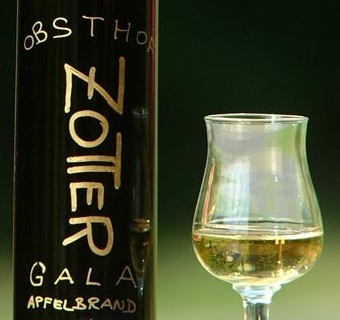 As for
schnapps distilling in Kukmirn, Kurt Lagler's brandies were known throughout Austria. Langler, who died in 2009 in a
distilling accident, was a pioneer who consistently focused on quality and had great success. Now Obsthof Zotter,
Edelbrände Freismuth and many others compete with Langler in the Kukmirn area. However, the number of
distilleries is falling, largely because the consumption of schnapps has declined in Austria.
As for
schnapps distilling in Kukmirn, Kurt Lagler's brandies were known throughout Austria. Langler, who died in 2009 in a
distilling accident, was a pioneer who consistently focused on quality and had great success. Now Obsthof Zotter,
Edelbrände Freismuth and many others compete with Langler in the Kukmirn area. However, the number of
distilleries is falling, largely because the consumption of schnapps has declined in Austria.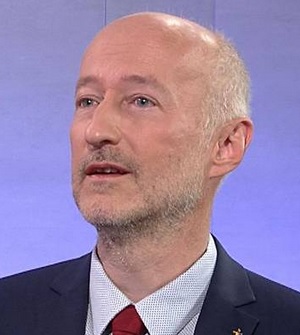 The
47-year-old Jonischkeit, previously a pastor in Kufstein, Tyrol (in southwestern Austria), received 48 of the 64 delegate
votes on the first ballot of the Superintendent election in Oberschützen in March (a two-thirds majority, 42 votes, was
required for election). He officially took over the office on September 1st, becoming the leader for the next twelve years
of the approximately 32,000 Evangelical Lutherans in Burgenland.
The
47-year-old Jonischkeit, previously a pastor in Kufstein, Tyrol (in southwestern Austria), received 48 of the 64 delegate
votes on the first ballot of the Superintendent election in Oberschützen in March (a two-thirds majority, 42 votes, was
required for election). He officially took over the office on September 1st, becoming the leader for the next twelve years
of the approximately 32,000 Evangelical Lutherans in Burgenland. 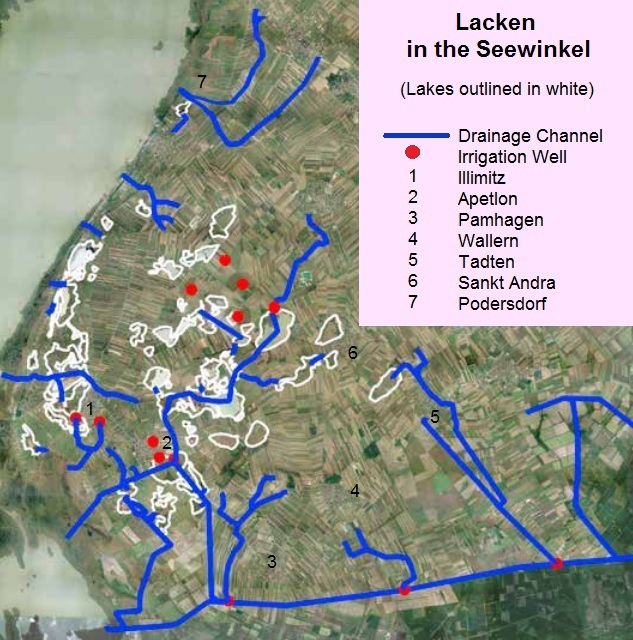 The
Lacken, a word that can also translate to Paints (more on this later), were formed when the larger salt marshes
were drained to create arable land starting about 1828. Now there is about 115 km of drainage channels in the area, though
they remain dry most of the time because the irrigation-intensive crops (and the wells that support those crops) keep the
groundwater levels low. However, if it rains “too much” and flooding becomes a possibility, the excess water is rapidly
drained off through the channels (meaning this rainwater has little opportunity to refresh the groundwater table).
The
Lacken, a word that can also translate to Paints (more on this later), were formed when the larger salt marshes
were drained to create arable land starting about 1828. Now there is about 115 km of drainage channels in the area, though
they remain dry most of the time because the irrigation-intensive crops (and the wells that support those crops) keep the
groundwater levels low. However, if it rains “too much” and flooding becomes a possibility, the excess water is rapidly
drained off through the channels (meaning this rainwater has little opportunity to refresh the groundwater table). the salty water is diluted and, as
the surface waters sink through the sand layer lining the lake basin on its way to the groundwater table, the salt is
trapped in the sand and the filtered water moves on. When the Lacken partially dry out in summer, capillary flow
pulls water up from the groundwater present in the sand layer and brings salt back into the surface waters of the Lacken,
thus replenishing the salt level. However, if the groundwater level falls too low, beyond the sand layer, capillary flow
cannot lift the water nor bring salt back up. If this occurs too often or for too long, the very nature of the Lacken
is changed.
the salty water is diluted and, as
the surface waters sink through the sand layer lining the lake basin on its way to the groundwater table, the salt is
trapped in the sand and the filtered water moves on. When the Lacken partially dry out in summer, capillary flow
pulls water up from the groundwater present in the sand layer and brings salt back into the surface waters of the Lacken,
thus replenishing the salt level. However, if the groundwater level falls too low, beyond the sand layer, capillary flow
cannot lift the water nor bring salt back up. If this occurs too often or for too long, the very nature of the Lacken
is changed.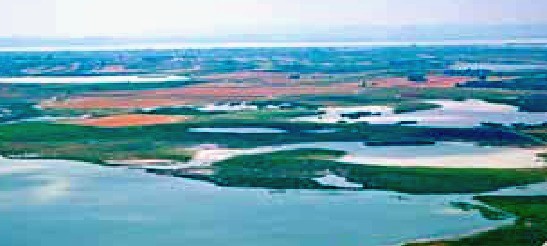 I noted above that the word
Lacken can also translate to paints. Although that is likely just a coincidence, it is an accurate one: as the
salt levels vary, algae types change and new plants bloom, often leading to a colorful change to the Lacken.
Likewise, when the water levels fall, the shoreline quickly adapts with new growth, like purple salt asters, ringing the
remaining waters with lines of colors. Nature truly paints the Lacken with oft-changing colors.
I noted above that the word
Lacken can also translate to paints. Although that is likely just a coincidence, it is an accurate one: as the
salt levels vary, algae types change and new plants bloom, often leading to a colorful change to the Lacken.
Likewise, when the water levels fall, the shoreline quickly adapts with new growth, like purple salt asters, ringing the
remaining waters with lines of colors. Nature truly paints the Lacken with oft-changing colors. The
KlimaTicket Metropolregion lets riders use all lines of the Verkehrsverbund Ostregion (Transport Network East
Region) in Vienna, Lower Austria and Burgenland. The KlimaTicket Region is valid in Lower Austria and Burgenland.
For those already using annual passes for commuting, the new tickets are generally less expensive and often significantly
so.
The
KlimaTicket Metropolregion lets riders use all lines of the Verkehrsverbund Ostregion (Transport Network East
Region) in Vienna, Lower Austria and Burgenland. The KlimaTicket Region is valid in Lower Austria and Burgenland.
For those already using annual passes for commuting, the new tickets are generally less expensive and often significantly
so. Burghardt,
Dr. Andrew Frank (Emeritus Professor, McMaster University), at St. Joseph's Villa, Dundas, Ontario, on Friday, November
27, 2020, at the age of 96.
Burghardt,
Dr. Andrew Frank (Emeritus Professor, McMaster University), at St. Joseph's Villa, Dundas, Ontario, on Friday, November
27, 2020, at the age of 96.  Corona
Virus in Burgenland: Austria continues with no entry restrictions for travelers arriving from the United States
other than a proof of vaccination, proof of recovery from COVID-19 or a negative Covid-19 test result that must be presented
upon entry.
Corona
Virus in Burgenland: Austria continues with no entry restrictions for travelers arriving from the United States
other than a proof of vaccination, proof of recovery from COVID-19 or a negative Covid-19 test result that must be presented
upon entry.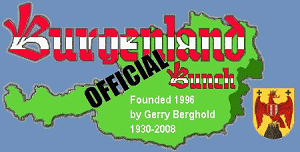 The
Facebook Bunch (from Vanessa Sandhu):
The
Facebook Bunch (from Vanessa Sandhu): Update
for book "The Burgenländer Emigration to America": Here is this month's update on purchases of the English issue of
the 3rd edition of Dr. Walter Dujmovits' book "Die Amerika-Wanderung Der Burgenländer."
Update
for book "The Burgenländer Emigration to America": Here is this month's update on purchases of the English issue of
the 3rd edition of Dr. Walter Dujmovits' book "Die Amerika-Wanderung Der Burgenländer." Beef
Goulash with Capers and Peas / Esterházy Gulyás
Beef
Goulash with Capers and Peas / Esterházy Gulyás
